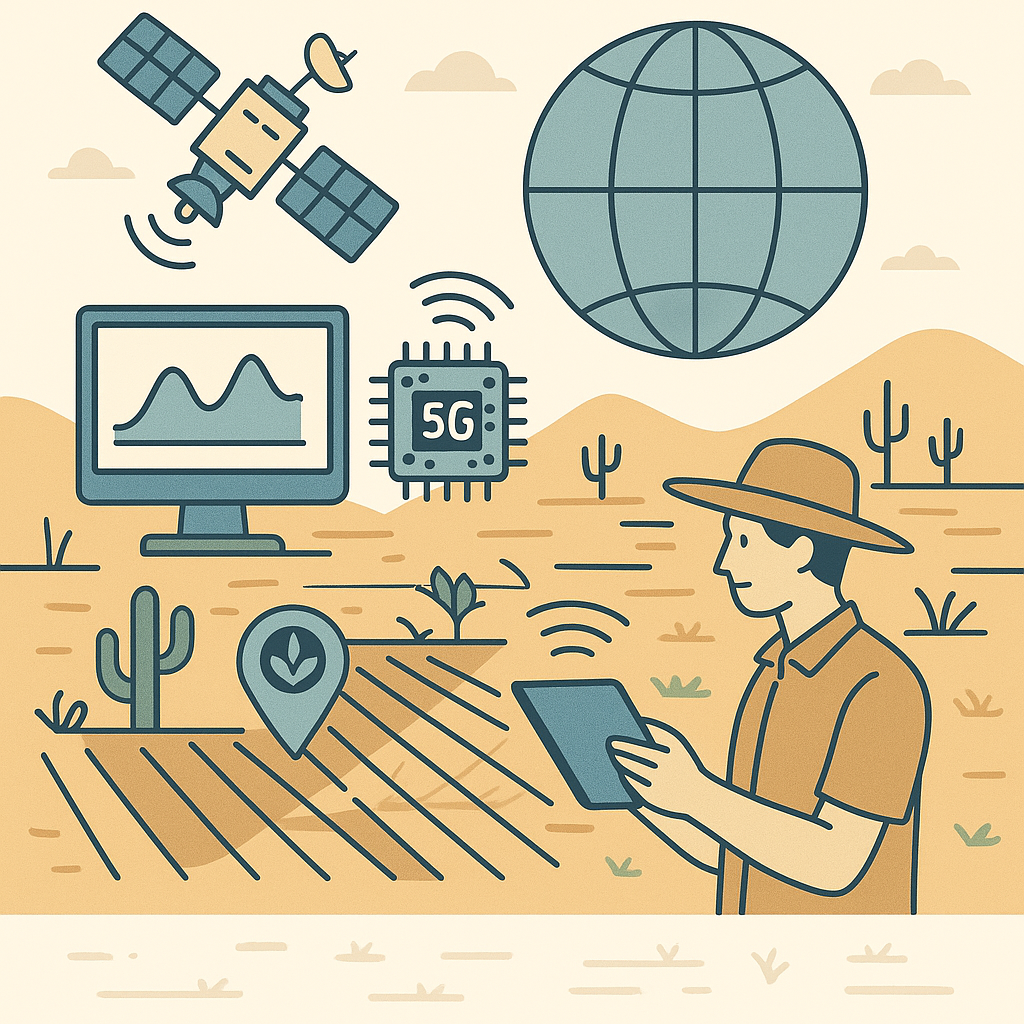Introduction
As the world faces growing challenges in agricultural productivity and sustainability, innovative solutions are essential. One promising approach is the development of low-power, 5G RedCap-enabled Non-Terrestrial Network (NTN) satellite IoT modules. These modules hold potential for revolutionizing remote agricultural monitoring, particularly in arid regions where traditional connectivity may be limited. This blog explores the development of such a module, its benefits, and its implications for agricultural practices in challenging environments.
Understanding Low-Power, 5G RedCap Technology
The 5G RedCap (Reduced Capability) technology is designed to enhance connectivity for IoT devices by providing a balance between performance and power consumption. This is particularly important for devices that require long battery life and efficient data transmission. Key features include:
- Low Power Consumption: RedCap technology is optimized to minimize energy use, making it suitable for remote applications.
- High Data Rate: Capable of supporting higher data rates compared to previous generations, which is essential for real-time monitoring.
- Extended Coverage: The NTN architecture allows for wider coverage, enabling connectivity in remote and underserved areas.
The Role of NTN in Agricultural Monitoring
Non-Terrestrial Networks (NTN) utilize satellite communication to provide connectivity where terrestrial networks are unavailable. This is particularly useful in arid regions, where:
- Geographic challenges limit the deployment of ground-based infrastructure.
- Farmers require reliable data to make informed decisions about water usage, crop health, and pest control.
- Real-time monitoring can significantly enhance resource management and productivity.
Designing the IoT Module
The development of a low-power, 5G RedCap-enabled NTN satellite IoT module involves several critical design considerations:
- Size and Weight: The module must be compact and lightweight to facilitate easy deployment.
- Durability: It should be designed to withstand harsh environmental conditions typical of arid regions.
- Energy Efficiency: Incorporating energy harvesting technologies, such as solar panels, can extend the operational life of the module.
- Sensor Integration: The module should support various sensors for monitoring soil moisture, temperature, humidity, and other critical parameters.
Implementation in Remote Agricultural Practices
The deployment of the IoT module in remote agricultural practices can significantly enhance operational efficiency. Applications include:
- Soil Monitoring: Continuous tracking of soil moisture levels can help farmers optimize irrigation practices, conserve water, and improve crop yields.
- Weather Data Collection: Access to localized weather data enables farmers to make timely decisions regarding planting and harvesting.
- Pest and Disease Management: Early detection of pests and diseases through sensor data can reduce crop losses and limit the need for chemical interventions.
Challenges and Solutions
While the benefits of a low-power, 5G RedCap-enabled NTN satellite IoT module are significant, several challenges must be addressed:
- Cost of Deployment: The initial investment in satellite technology and infrastructure can be high. Solutions include government subsidies and partnerships with agricultural organizations.
- Data Privacy: Ensuring the privacy and security of data collected is crucial. Implementing robust encryption methods can mitigate risks.
- Interoperability: The module must be compatible with various sensors and existing agricultural technologies. Adopting standardized protocols can enhance compatibility.
Case Studies of Successful Implementations
Several case studies highlight successful implementations of similar technologies in agricultural settings:
- Case Study 1: In a remote area of Australia, a low-power satellite IoT module was deployed to monitor soil conditions, leading to a 30% increase in water efficiency.
- Case Study 2: A pilot program in sub-Saharan Africa utilized NTN technology for pest monitoring, which helped reduce crop losses by 40% during the growing season.
Future Prospects
The future of agricultural monitoring in arid regions looks promising with advancements in satellite IoT technology. Future developments may include:
- Improved AI Integration: Utilizing artificial intelligence to analyze data for predictive insights, enhancing decision-making processes.
- Expanded Sensor Capabilities: Integrating more advanced sensors for detailed monitoring of additional environmental factors.
- Wider Adoption: As costs decrease and technology improves, broader adoption of these systems among farmers is expected.
Conclusion
The development of a low-power, 5G RedCap-enabled NTN satellite IoT module for remote agricultural monitoring presents a transformative opportunity for farmers in arid regions. By leveraging advanced technology, farmers can overcome connectivity challenges, optimize resource management, and ultimately enhance agricultural productivity and sustainability. As we continue to innovate and refine these technologies, the potential for improved agricultural practices and food security in challenging environments is immense.



